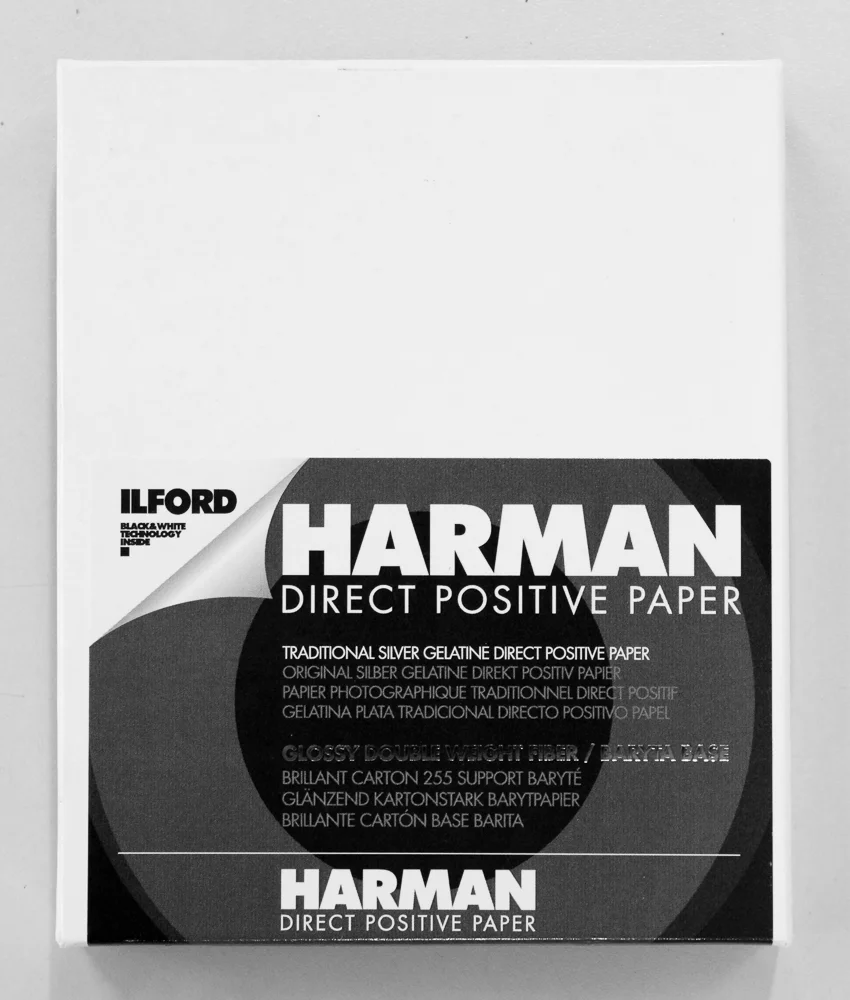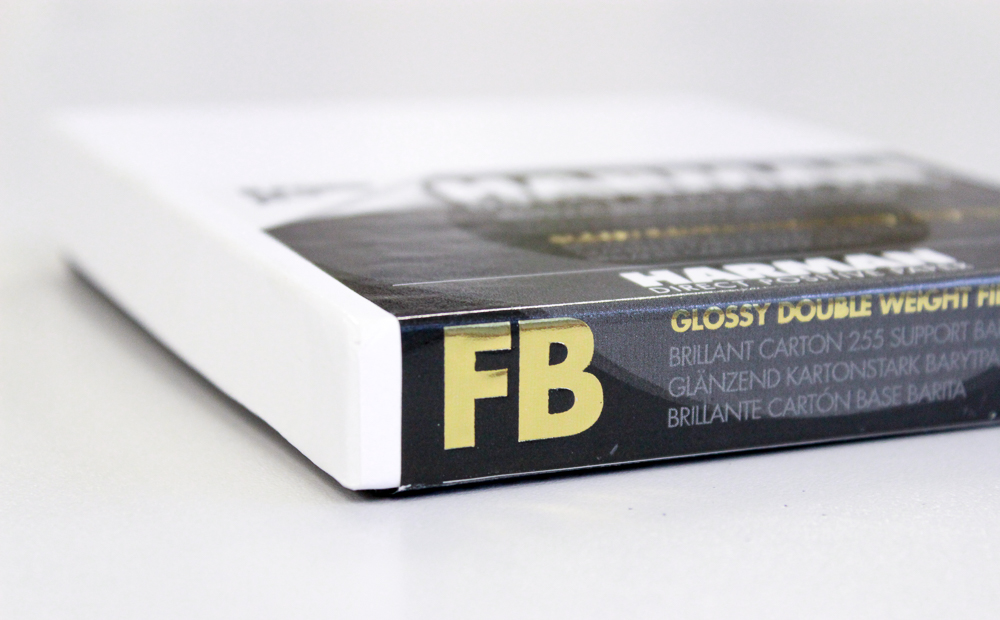Harman Direct Positive Paper is traditional fibre based paper with a special ability. When exposed to the light -- in a camera or pinhole camera -- it forms a positive image. This behaviour is precisely the opposite to that of standard darkroom paper, and is a boon for anyone seeking to make direct prints without the need for a negative, paper or otherwise.
I acquired a pack in 5x4” size last week and set about putting it through its paces. I worked in close proximity to the darkroom, which, as it turned out, was a sound decision. Moving from a still life setup to the darkroom and back again made getting a measure of the paper, of how it exposes, relatively easy. I made and corrected mistakes and began to see a glimpse of the delightful tonality the paper has to offer.
Paper is much slower than film and this paper is no different, being approximately ISO 1-3. This makes for relatively long exposures in all but the brightest conditions. Pinhole photographers will be familiar with this way of working (pinholes being very small apertures in themselves resulting in long exposures), but anyone wishing to use the paper in a conventional large format (or other) camera will have to weigh up the extra exposure time against their pictorial intentions. Sharp portraits, for instance, could well be a challenge for the sitter.
I resolved to test the paper in my trusty Intrepid Field Camera. My 150mm lens allows for relatively close focussing, albeit with significant bellows extension. The Intrepid was up to the task, and I was able to make the kind of floral composition I had in mind. The paper is luxuriously thick, as a baryta darkroom paper usually is, but this does provide a challenge to squeeze it into a film holder. At first I thought it might be a little too large in area, and so I trimmed the edges. This didn’t solve the issue, so the paper thickness certainly was to blame. Nevertheless it can be inserted with a little effort. Film holders are designed to hold film after all!
After some initial mistakes I began to make some pleasing images. An error I did make was to use window light. This surely added to the quality of light in the images, but as the winter day darkened I began to chase exposure changes and so made some errors. It didn’t help that sky also brightened intermittently.
A relatively high key image boasting a wide-ranging tonality, on Harman’s Direct Positive Paper.
The image shown above is a good representative sample of what the paper can do. I see a paper capable of subtle shifts in tonality that retains excellent detail. The paper is said to produce images of generous contrast, but I wouldn’t discount it for a wide and subtle tonal range. There is something exciting about making a one-off, original image in this manner. For sure, this may be precisely the reason some won’t like it, but if you enjoy alternative processes I wager you will.
I have waited some time to get hold of a box of this excellent product. Hopefully my getting hold of it means that it is becoming more available than it has been. If you’ve had your eye on it and haven’t so far been able to get any, now might be the time to look again. I don’t think you’ll be disappointed.


